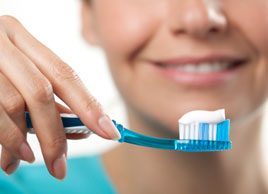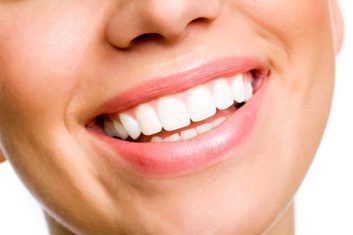
Smart mouth
Yes, we need to take care of our teeth for health’s sake. But let’s face it: We all want our teeth to look their best, too. So it’s no wonder Canadians are scrambling to improve theirs-right from home. While cosmetic dentistry procedures have declined by 10 percent since 2007, the at-home oral care market is growing and is projected to reach $1.1 billion by 2016. “Manufacturers are making products that were previously available only through dental offices,” says Dr. Benoit Soucy, director of clinical and scientific affairs at the Canadian Dental Association.
One such company is Procter & Gamble (P&G), whose Crest toothpaste first came on the market nearly 60 years ago (today, their various products are under the Crest, Scope and Oral-B brands). “We’ve been at the forefront of innovation in oral care for a very long time,” Dr. Svetlana Farrell, head of the oral care clinical operations department, told me on a recent visit Best Health made to the P&G headquarters in Cincinnati, Ohio. “Just developing a new toothpaste can take more than a decade.” That’s one reason they have more than 1,000 Ph.D.s among the 8,000 research and development employees worldwide.
Read on to learn about some of the newest breakthroughs in oral health, coming soon to a bathroom near you.

For fresher breath
“The biggest cause of halitosis? The bacteria that break down the food particles left between teeth,” says Dr. Rick Caldwell, president of the Ontario Dental Association. But even after brushing and flossing, certain foods, such as onions and garlic, can be the problem. Enter new technology: for example, Scope Dual-Blast mouthwash ($4, 750 mL). “It contains a proprietary technology that traps [and neutralizes] the bad-smelling volatile sulfur compounds, or VSCs, that come from odour-emitting foods,” says Dr. Veronica Sanchez, global oral care scientific communications manager at P&G. During laboratory tests, researchers used an instrument called a Halimeter to determine the VSC levels in subjects’ mouths. They also use “human oral malodour judges.”
Explains Sanchez, “These are people with trained biological ‘noses’ who are experts at smelling other people’s mouths.” (Nice work if you can get it?) Thanks to their high degree of sensory acuity, they can detect and rank breath quality in the same way a perfumer can recognize traces of a certain note in perfume-except without the pleasant payoff. The rinse also eliminates up to 98 percent of bacteria, thanks to an ammonium compound with antiseptic properties.
Listerine UltraClean Mouthwash ($7, 1 L) kills up to 99.9 percent of bad breath germs using eucalyptol, menthol and thymol essential oils in an alcohol base. “The alcohol is not an active ingredient,” explains Christine Charles, director of strategy and communications, scientific and professional affairs, at Johnson & Johnson. “It acts as a carrier vehicle for the oils, helping them to penetrate the plaque, and kill bacteria faster.” The mouthwash also has Listerine’s new Everfresh technology, a combination of proprietary ingredients that delivers the same clean sensation you get after a trip to the dentist, along with fresh breath that lasts up to three times longer than brushing alone.
But mouthwash can’t replace regular brushing and flossing. “If your teeth are not well-cleaned, you’ll have bad breath no matter which mouthwash you use,” says Soucy. Unless you wear braces, use regular dental floss (water and air flossing systems may not be as good at getting in nooks and crannies), and brush the insides of your cheeks and your tongue. “If you clean your whole mouth and not just your teeth, it’ll take longer before the biofilm re-establishes itself.”

For better brushing
Brushing with a manual toothbrush? You’re not alone-71 percent of Canadians still use them, according to a 2013 survey. But you might want to reconsider. A 2009 research report concluded mechanical toothbrushes are superior to manual ones for removing plaque and protecting against gum inflammation.
P&G researchers delved deeper into this finding at their Insights Suite in Cincinnati, where they do focus-group testing. I saw this facility; it includes a comfy living area and stocked three-piece bathroom, designed to help participants feel as if they are in their own homes. It was here that P&G discovered why some people weren’t switching to mechanical toothbrushes. “They prefer to feel in control of the brush; they like a larger brush head; and they want to brush more than one tooth at a time,” says Sanchez. (Many electric toothbrushes focus on each individual tooth for five to 10 seconds; a manual tooth brush covers more teeth.)
The result of those findings is the Oral-B Professional Deep Sweep + SmartGuide Triaction 5000 ($185), which uses both stationary and sweeping bristles on a manual-style head to make for an easy transition to power brushing. “It looks and feels just like a manual version, but the sweeping action removes 100 percent more plaque,” says Sanchez.
Soucy and Caldwell, both dentists, insist a good brushing technique is key. Whether it’s a mechanical or manual device, the brush should be labelled “soft” to avoid damaging enamel and irritating your gums; hold it at a 45-degree angle and gently brush in short strokes from where the tooth and gum meet to the edge of the tooth, for two to three minutes at least twice daily.

For healthier teeth
“Look, Ma-no cavities!” was the slogan for the first Crest advertising campaign in 1956, illustrated by Norman Rockwell. Formulated with stannous fluoride, and the first toothpaste to be clinically proven to help prevent cavities and tooth decay, it was considered a scientific breakthrough.
“Fluoride works on the surface of teeth to protect them and make them less susceptible to the acid breakdown that leads to cavities,” says Caldwell. After problems with stability (a short shelf-life), Crest replaced its stannous fluoride with sodium fluoride in the early 1980s. “But stannous fluoride forms a layer where the roots of teeth are exposed to the environment, reducing sensitivity,” says Farrell. And its antimicrobial properties help prevent gingivitis and plaque.
Crest’s Pro-Health range of pastes is the result of a 12-year mission by P&G scientists to perfect a stabilized stannous fluoride formulation. The newest offering, Crest Pro-Health Clinical Plaque Control Toothpaste ($3, 115 mL) is aimed at improving gum health. “We know that up to 50 percent of the population has gingivitis, a reversible condition that if left untreated can lead to periodontal disease and lost teeth,” says Farrell. Its level of stannous fluoride kills off plaque germs and slows their ability to reproduce while preventing cavities and reducing sensitivity.
Along with fluoride toothpaste, certain foods can also help you build healthier teeth, says Caldwell. “Eat foods rich in calcium and phosphorus such as eggs, beef, chicken, turkey, fish and bread. And avoid highly processed and sweetened foods, whose debris contributes to decay.”
Related:
• 5 things your toothbrush wants you to know
• Quiz: Do you have sensitive teeth?
• 6 reasons why your gums are bleeding
